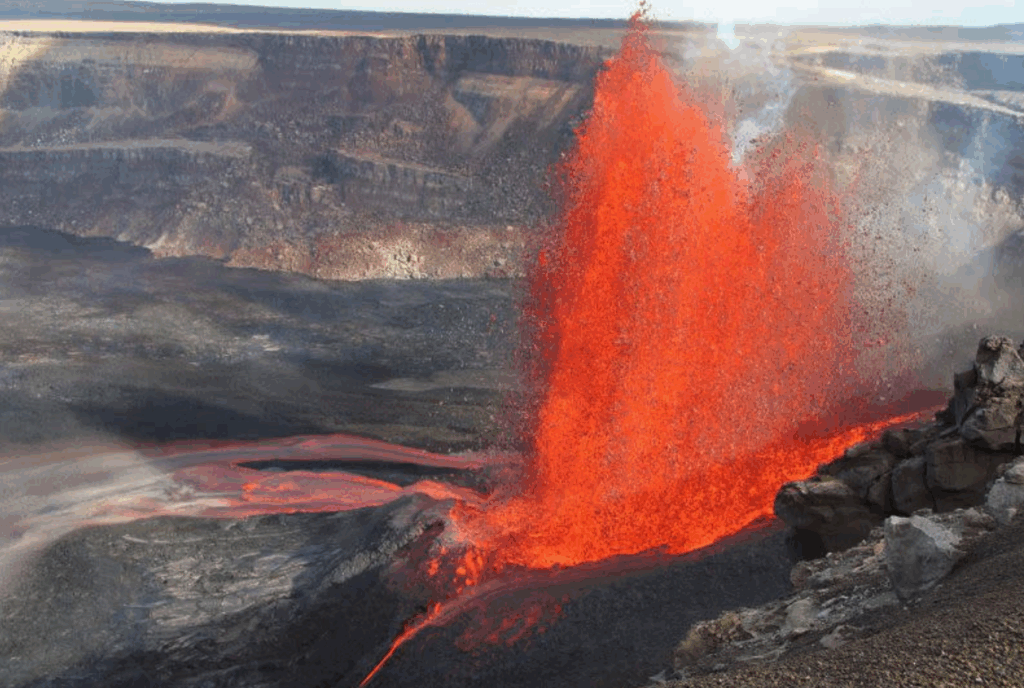On May 21, 2025, a study published in Nature revealed that there is a vast reservoir of gold in Earth’s core, and it is leaking toward the surface. This finding comes from researchers at Göttingen University, led by geochemist Nils Messling, who analyzed volcanic rocks from Hawaii. The study suggests that more than 99% of Earth’s gold is in the core, and a small amount is slowly making its way to the crust through the mantle.
The Study and Its Findings
The research focused on basaltic rocks from Hawaii, obtained from the Smithsonian Institution, totaling half a kilogram (1.1 pounds). The analysis revealed higher amounts of the ruthenium-100 isotope, which is characteristic of the Earth’s core, suggesting that gold and other precious metals like ruthenium, palladium, rhodium, and platinum are leaking from the core into the mantle. The core-mantle boundary is about 2,900 km (1,800 miles) deep, and the study estimates that several hundred quadrillion metric tons of super-heated mantle material rise from this boundary to form ocean islands like Hawaii.
Implications and Geological Insights
The study suggests that this leaking process has been ongoing for geological timescales, potentially replenishing Earth’s gold supply over 4.5 billion years, though the amount per rock is minuscule. Dr. Nils Messling noted, “When the first results came in, we realized that we had literally struck gold! Our data confirmed that material from the core, including gold and other precious metals, is leaking into the Earth’s mantle above.” Co-researcher Matthias Willbold added, “Our findings not only show that the Earth’s core is not as isolated as previously assumed.”

Public and Scientific Reaction
Turning to social platforms, X posts from users like @BrianRoemmele
highlight significant interest, with thousands of views and favorites, reflecting public fascination. Posts mention the study’s discovery through volcanic activity and quote researchers, indicating broad acceptance and curiosity.
Detailed Breakdown in Table Form
To organize our thoughts, let’s look at a table summarizing key details:
| Detail | Information |
|---|---|
| Study Publication Date | May 21, 2025 |
| Journal | Nature, DOI: https://doi.org/10.1038/s41586-025-09003-0 |
| Lead Author | Nils Messling, geochemist, University of Göttingen |
| Coauthor | Matthias Willbold, professor, University of Göttingen |
| Study Focus | Analysis of Hawaii’s basaltic rocks for core-mantle interaction |
| Gold in Earth’s Core | More than 99.95% of Earth’s gold is in the molten core |
| Rock Sample Source | Smithsonian Institution, Washington, DC |
| Rock Sample Amount | Half a kilogram (1.1 pounds) |
| Analyzed Element | Ruthenium, part of the platinum group (platinum, rhodium, palladium, etc.) |
| Core Layers | Solid inner core (759 miles/1,221 km radius), liquid outer core (1,400 miles/2,253 km thick) |
| Mantle Thickness | 1,800 miles (2,897 km) of mostly solid rock |
| Leaking Process Duration | 500 million to 1 billion years |
| Additional References | Previous work: https://www.geochemicalperspectivesletters.org/article1917/ |
How does this table help clarify the situation for you? What other details might we add to make it even more comprehensive, and how might this inform our understanding of Earth’s internal dynamics?
+ There are no comments
Add yours